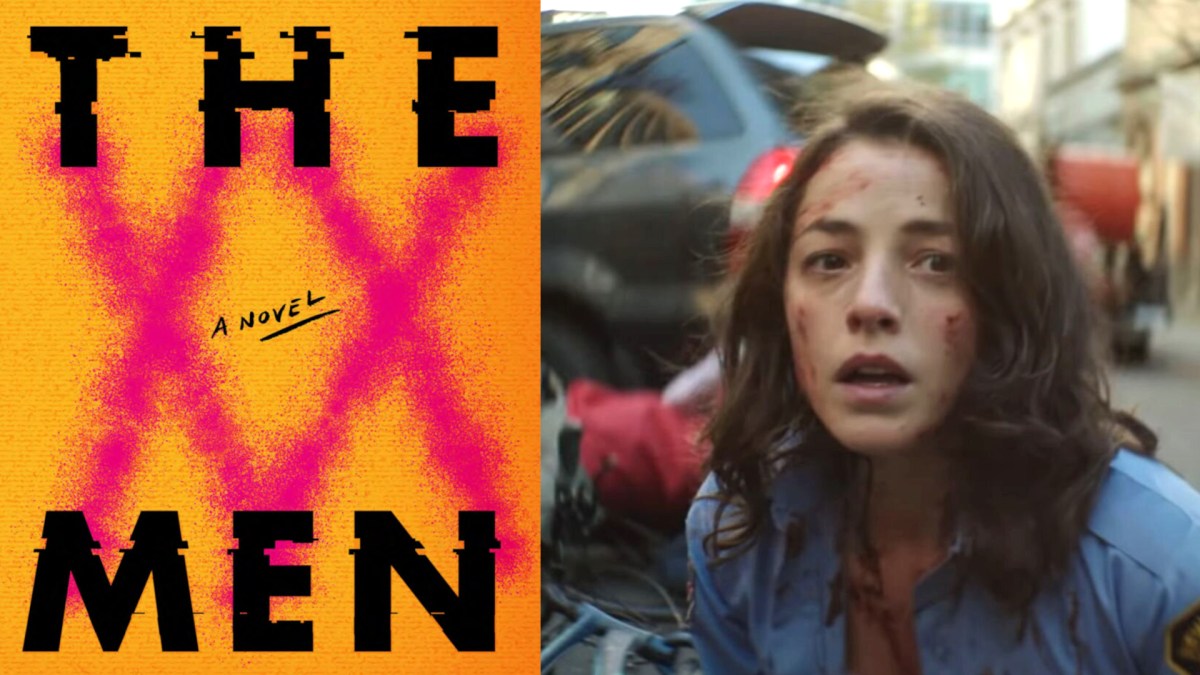All the cisgender men in the world inexplicably and suddenly disappear. Maybe it’s because of a disease targeting “Y chromosomes.” Maybe it’s because of something to do with testosterone. Nonetheless, only cisgender women remain, and they must learn how to cope with the change.
For years, these stories have provided a sociocultural brain teaser for dystopian science-fiction writers, offering a post-apocalyptic narrative setting to explore gender politics among women. But these stories have always left an important group of people out in the cold: Transgender women, men, and nonbinary readers. And in 2022, these narratives are getting particularly stale.
What is the ‘gendercide’ story?
The premise, dubbed the “gendercide” or “gender plague” narrative, essentially depicts a major event that radically alters society by killing, incapacitating, or disappearing an entire gender. The remaining population must learn how to cope without the missing gender. The gender binary prevails in gendercide stories; these narratives largely focus on either cis men or cis women disappearing, and nonbinary people are rarely considered in the aftermath.
In recent years, most gendercide stories tend to do away with cisgender men, and most disappear cis men because of something to do with their physiology. The implication is that, despite all the social and political power cis men have in the world, these men cannot resist a virus, disease, or phenomenon that targets the root of their maleness: Their bodies.
No better example exists than the Vertigo comic series Y: The Last Man, where a mysterious disease targeting the Y chromosome kills all but one cisgender man, essentially wiping trans women off the planet as well. Trans men do exist in the original comic’s world, but they aren’t treated with much respect by the narrative. One cisgender woman misgenders a deceased trans man, calling him “a tranny” killed by an anti-male terrorist group because its members “thought she was a real guy.” Ultimately, the story reinforces the idea that gender can be meaningfully defined, categorized, and separated based on assigned sex at birth.

In FX’s TV adaptation based on the comic, there is much more sensitivity for trans people and bodies. Trans actor Elliot Fletcher portrays a trans man named Sam Jordan, who receives a far more affirming consideration for his gender identity in the series. And FX’s narrative goes to lengths to stress that a Y-chromosomal mass-death event would impact a wide assortment of genders and bodies. It’s not just cis men dying because of Y: The Last Man’s disease.
But ultimately, as Emily St. James accurately diagnoses for Vox, Y: The Last Man’s premise is still built on gender essentialism. The series’ commentary on patriarchal power dynamics, gendered trauma, and oppressive power among women relies on a narrative device that insists there are primarily two genders that can be primarily defined based on assigned sex. Any other bodies are outliers, which can be lumped into the “dead” or “not dead” categories. Thus, trans men survive alongside cis women, and trans women die alongside cis men.
“You can have a world where ‘every mammal with a Y chromosome dies’ or you can have a world where gender is a complicated spectrum of different identities,” St. James writes. “I’m not sure you can have both.”
‘The Men’ and its trans women
Spoilers for Sandra Newman’s The Men follows.
Y: The Last Man is not alone in fumbling with trans inclusion amid its binary premise. Lauren Beukes’ 2020 novel Afterland envisions a world where the fictional Human Culgoa Virus targets and kills any person with a prostate gland through excruciatingly painful prostate cancer. This, yes, includes killing off trans women, something the book is very explicit about.
“Unlike your racist Fox News-lovin’ grandparents, you’ll be pleased to know that CV does not discriminate on race, class, religion, or sexuality,” one character says in the novel. “You just need to have that Y chromosome. Sorry trans sisters, peace out: It’s the equal-opportunity fuck-you we’ve been promised since the dawn of the first mitochondrial collision.”
Then there’s The Men, Sandra Newman’s upcoming novel where, not unlike Y: The Last Man, “all people with a Y chromosome mysteriously disappear from the face of the earth,” the book’s publisher Grove Atlantic notes.
Newman herself is nonbinary, and at first blush, it appears her book’s marketing is trying to make room for trans people in the mass gender disappearance event. But unsurprisingly for a chromosomal-based gendercide novel called The Men, the gender essentialist premise still drives the plot. The book’s main character, a cis woman named Jane, must live in a world where “women must create new ways of living while coping with devastating grief,” the publisher notes. Footage surfaces on the internet called “The Men” that seemingly portrays “images of the vanished men marching through barren, otherworldly landscapes.”
Implicitly, the marketing copy misgenders trans women and men. And an advanced reader copy of The Men obtained by queer author Ana Mardoll reveals a gender disappearance novel where trans women are forced to share in cis men’s fate for no clear reason.
Mardoll, a critic of the larger gendercide and gender plague genre, revealed in a viral Twitter thread that Newman’s novel largely defines the disappearance event in terms of men being vanished and women being left behind, according to xer criticism. Trans men are only given a few brief moments of recognition, including a brutal assault scene where cis women bash and sexually assault a trans man. Trans women, meanwhile, are whisked away with all the cis men to a demonic landscape where they are seemingly possessed and tortured. It’s highly implied cis men are sent to Hell because of their evil deeds, and trans women are ultimately brought along for the ride because of their chromosomes, like it or not.
Newman’s narrative mentions how its cis women express pity that its trans women must suffer. “Now this: those trans girls gone like men,” one character bemoans. “Just another way God fucked you.” It’s even implied that, perhaps, trans women may have a little more resiliency to the possession that other cis men experience.
But trans women are ultimately victims to a cis-centric gender disappearance plot; no better example exists than how the book’s characters ultimately decide to describe the disappearance event as taking away “men,” even though, as one character accurately decides, the term “erased all the trans women, intersex people, and nonbinary folks who’d gone.” Cis pity for those poor, poor possessed trans girls seems hollow in retrospect. Rather, as Mardoll notes in xer criticism, “The narrative weakly offers the idea that [trans women’s] removal was unfair, perhaps even a mistake, but in the end they are an acceptable casualty of the gendercide.”
The Men is ultimately no better than its predecessors, no more than superficially trans-inclusive. It is still doing the same work as Y: The Last Man and many other gendercide works: It insists gender is most meaningfully understood by centering cis bodies as the penultimate authorities on manhood and womanhood. Newman’s story demands trans women, men, and nonbinary people conform to its narrative devices.
“It is worth pointing out here again that the gender rapture in this book is entirely supernatural. There is absolutely nothing compelling the ‘demons of earth and sky’ into taking the trans women with the cis men; there is no virus or scientific explanation for why ‘Y chromosomes’ all have to be affected by this magic spell,” Mardoll writes. “It is my belief that the author wrote the first drafts without trans women in mind at all, then hastily shoved them into the demon world when someone asked ‘what about the trans people?'”
Is the gendercide novel fundamentally transphobic?
This isn’t to discount the possibilities opened by the gendercide, the gender plague, or whatever you would like to call this dystopian premise. The genre can be salvaged from its transphobia and transmisogyny.
Manhunt by Gretchen Felker-Martin, which focuses on a virus that turns T-dominant bodies into brutal zombie-like monsters, was praised by trans readers for configuring a trans-centered medically-inclined gender plague world where trans women aren’t grouped in with cis men. Granted, these stories must be self-aware about our society’s gender essentialist conceptions of hormones, sex, and gender. But when they are, they can offer a gendercide tale that offers valuable commentary on sex’s malleability.

There are other possibilities too. The Men’s supernatural premise could easily be reworked into a story where angels, demons, gods, or what-have-you whisk away all the men — cis, trans, or closeted — without any chromosomal reason for the matter. Given the novel’s plot, this seems like a plausible solution that should have been applied to Newman’s work early on, essentially sparing trans women from the novel’s bizarre anxiety over trans bodies.
In other words, the problem is not necessarily the gendercide story. The Men, Afterland, and Y: The Last Man each start with a simple, reasonable premise: A major, cataclysmic event based on gender changes the world. Transphobia and transmisogyny creep into these stories when their writers lean into simplistic medical logic about chromosomes, sex, and bodies to convince readers that the gendercide is believable. The Men concludes trans women would be deemed evil and sent to its hellscape for having XY chromosomes, even though trans women can have XX chromosomes. Afterland decides trans women would die off from prostate cancer, even though research suggests trans women may be at a “substantially lower risk” for prostate cancer if they are on HRT.
These worlds are built on shoddy logic that lumps trans women in with cis men’s fate because their authors ultimately believe it is better to categorize trans women with cis men than build worlds that meaningfully place trans women where they belong: As women with meaningful experiences that equally define womanhood.
As trans women, we deserve to survive in these stories. To imply our deaths is to suggest we are really, on some biological, physiological, or supernatural level, just men. The gendercide narrative can be saved, but not without some deep thinking on the part of its authors.
(Images: Grove Atlantic, FX)
Want more stories like this? Become a subscriber and support the site!
—The Mary Sue has a strict comment policy that forbids, but is not limited to, personal insults toward anyone, hate speech, and trolling.—









Published: Mar 22, 2022 04:19 pm